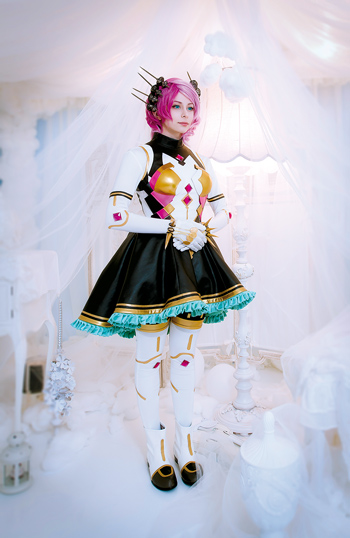
One cannot talk about pop culture without mentioning aidoru (pop idols) and cosplayers, like Yuriko and Rebecca.
The history of Japanese pop idols is very long and fascinating, starting in 1964 after the French movie Cherchez l’idole, starring the then 19-year-old “yé-yé” singer Sylvie Vartan, became a hit in Japan and its theme song sold over 1,000,000 copies. Since then, the term has been applied to cute teenage girl and boy singers whose popularity is based more on their looks and personality than their singing talent. Girls, in particular, have traditionally conformed to the idealized image of the pure, innocent and chaste woman whose artistic amateurishness, far from being a problem, endears them even more to their fans. Now, more than ever, thousands of girls dream of becoming famous. Among them there are an increasing number of foreigners.
-Yuriko Tiger
Where does your name come from?
Yuriko Tiger :Yuriko was inspired by a character in the Bloody Roar video game. I’ve always liked the name Yuriko because it literally means “lily girl.” Tiger is a sort of pun on Taiga, who is a character in the Toradora! light novel/anime/game franchise. It’s also a reminder of my rebellious side, especially when I was in high school. So you could say Yuriko shows my gentle, sensitive side, and Tiger my determination to succeed in Japan.
What took you to Japan?
Y. T. : I wanted to become a famous pop icon in Japan. I knew that, as a foreigner, achieving my dream would be almost impossible, but I wanted to give it a try anyway. I’ve had this dream since I was introduced to manga and anime at the age of ten. My father used to buy me a lot of comics and video games. I think I began to play my first Tekken when I was three. Then I fell in love with Sailor Moon, but I really became crazy about otaku culture when I was around eight or nine and I discovered Inuyasha and all the rest of Takahashi Rumiko’s work. I actually began to draw manga myself. Then in junior high school, I became interested in Japanese music and fashion through YouTube, the Internet and a now-defunct monthly called Benkyo, the first Italian magazine that offered indepth coverage of different aspects of Japanese pop culture. I was completely fascinated by cosplay, but I thought it was something they only did in Japan. So I was shocked when, aged 13, I went to Lucca Comics and came face to face with Italian cosplayers. It was the best thing I’d ever seen. For me, it was like acting, each time choosing a character you liked. So I began to make my first costumes and take part in national contests.
What was your family’s reaction?
Y. T. : At first, they didn’t take me seriously.They changed their mind when I was in high school and took a part-time job to pay for my trip to Japan. I guess they were won over by my determination, and began to actively support me.
So you came to Japan after finishing high school?
Y. T. : Yes, I was still 19. Just before coming to Japan, I attended a once-a-week basic Japanese class for six months. Then I studied in Tokyo for three wonderful months, and vowed to come back for a longer period as soon as possible. Back in Italy, I was even contacted by a TV programme called Game Time, which offered me a job as an assistant reporter in Tokyo. So I returned to Tokyo for a second, six-month stay. The reporting job turned out to be a very limited and short-lived experience, but at the same time I got signed up by a model agency.
How did you find that job?
Y. T. : I had a few good studio photos taken, and a Japanese friend helped me write a CV listing all my past experience (events, cosplay contests, etc.). Then I had to have an interview. It’s very important you approach your job hunting in a professional way. You have to show them you’re serious and reliable. You can’t just send them a selfie, as some people do.
So Japan really was the wonderland you’d always dreamed about.
Y. T. : Yes, at first I was in paradise. However, things changed when it was time to sign a contract, and I saw a different side to Japanese culture about which I knew nothing. For example, the agency sponsored my working visa, and they said I had to leave my Japanese school because now my job came before anything else, including studying. Secondly, I had to move from the shared house where I had lived until then into a condo, which among other things was much more expensive. There were many other things, like having to ask for permission every time I wanted to go out with my friends. Last but not least, I was completely forbidden to have a boyfriend.
On top of that, my agency tried to turn me into a gurabia (or gravure) idol i.e. a bikini model. In fact, my first job was for Playboy Japan. It was produced by a bunch of extremely rich, bad mannered and chauvinist people, who tried to intimidate me into posing for nude pictures. One night, we were in a club and in response to their threats I flipped the table over in anger. After that episode they tried to boycott me, so eventually I left the agency and began to work with my current manager, who left his previous job to devote himself to boosting my career.
When did you have your breakthrough?
Y. T. : It was completely by chance. I went to Italy for an engagement, and on my return to Japan I was interviewed at Narita Airport by a popular TV programme called Why Did You Come to Japan? They ended up devoting the whole 25-minute episode to me. They showed my tiny apartment including my huge cosplay collection; then we went to a maid café together; and in the end they reported on my job as an assistant MC at the World Cosplay Summit in Nagoya. At the time, I had about 1,000 followers on Twitter, but the night my episode was aired on TV, they suddenly shot up to 10,000 [she currently has almost 36,000 – JD]. The year after that, 2015, was a boom year for me because I was named as a new talent on TV, recorded my first CD single, did a few idol performances around Japan, and was finally recognized as a professional cosplayer. That was very important for me because in Japan foreign cosplayers never get paid jobs.
So you’re no longer connected with the Italian otaku scene?
Y. T. : I still have very strong connections. Last year, for example, I had to take a break from working in Japan because of visa-related issues, so I spent a few months in Italy and I took part in about 15 otaku events around the country. The interesting thing is that, while in Japan, I’ve developed a more grown-up image, and now I’m more involved in modelling and, recently, even a little acting on TV; in Italy they still want Yuriko, the colourful otaku idol who dances on stage to the sound of anime songs.
Don’t you ever wish you had more free time?
Y. T. : Not at all! I like being busy. In April, for example, I had a whole week free, and I still managed to find something to do. If I have too much time on my hands I get bored, so the more I work the better.
INTERVIEW BY J. D.
-Rebecca Koga
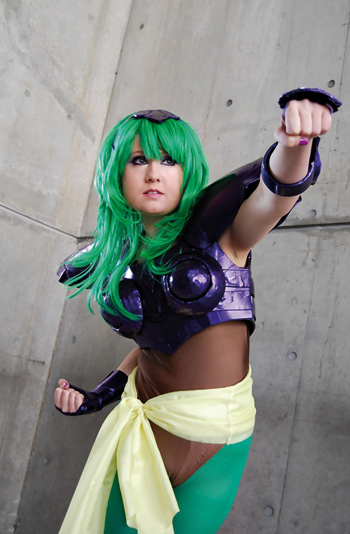 Rebecca Koga is an American cosplayer who has lived in Tokyo since 2009. Originally from Seattle, Washington, she has been making her own costumes since 2000.
Rebecca Koga is an American cosplayer who has lived in Tokyo since 2009. Originally from Seattle, Washington, she has been making her own costumes since 2000.
Where does this passion for cosplay come from?
Rebecca Koga : It started about 15 years ago. In Washington, we have a Renaissance Faire where people can dress like knights or princesses. That was my first kind of cosplay event. Then in 2004, I went to my first animation convention, Sakura-con, in Seattle, and the standard of costumes was way beyond what I had seen at the Renaissance Faire. From there, my interest snowballed out of control. I decided I wanted to be a cosplayer and make those kinds of beautiful costumes.
Did you go to Sakura-con because you wanted to see the cosplay scene there?
R. K. : Actually, I was already into anime and manga at the time, so I wanted to learn more about animation. But when I saw everybody wearing those gorgeous costumes I thought it was perfect; like the Renaissance Faire, but it was about something I actually liked.
So you started making your own costumes right from the beginning?
R. K. : Yes, I hardly had any money to buy a costume, so I’d get the materials from recycled clothes, curtain fabrics, whatever I could get my hands on.
What did your parents think about your passion?
R. K. : They liked it! From the start they were very supportive because in Washington, at least, handmade things are really special, so my parents thought there was money to be made (laughs). Which is true, by the way.
You moved to Tokyo in 2009 after marrying your Japanese husband. How was the transition between the two countries cosplay-wise?
R. K. : My husband is very supportive of my hobby, so he found me some events I could go to and helped me make some friends. I think my first event in Japan was only two or three months after moving here.
Is cosplay in Japan really as different from the US as they say?
R. K. : I guess so. In the US, it’s more common to see a lot of variations. Some people do “genderbent” versions, turning a boy character into a girl. Others do crossovers, like putting Disney and Star Wars together. You don’t see that here. In Japan, cosplayers want to portray the original character as accurately as possible. And I’d say the standard is also different. I’ve seen a lot more elaborate costumes here than in America. Japanese cosplayers spend a lot of money on their costumes; if they can’t make one themselves, they’ll spend thousands of dollars buying one. In the US, many people seem to have a limited budget, so they just throw something together.
You told me you know other foreigners who cosplay in Japan. Do you find the local scene welcomes foreigners?
R. K. : I think so. You’re definitely not going to see a lot of foreigners, but Japanese cosplayers are very curious if they notice a foreigner is doing the same series as them because they feel a connection, so it’s a way to make friends.
Have you ever had any problems while cosplaying in Japan?
R. K. : Well, it’s pretty common for guys to try to take up-skirt shots, but I’m always straightforward with people. If they do something I don’t like I simply tell them to go away, but in America people will actually try to touch you; in Japan nobody would ever dream of doing that. They know if they get physical they’re going to be in trouble, so they’re more sneaky.
Japan is a veritable cosplay paradise, and events are held in and around Tokyo pretty much every week. How often do you cosplay now?
R. K. : I’d say every other month. When it comes to bigger events like New Layers Paradise, Cosplay Festa TDC (both of them take place at Tokyo Dome City) or the Japan Cosplay Festival (JCF), I go once every two or three months, but I also go to studio events every month just to take pictures with a group of friends.
How can I find out about these events?
R. K. : I think the best way is to check out the Cure website (http://ja.curecos.com). They have an event listing which shows you what’s going on in the Tokyo area.
And how do I take part in one of these events?
R. K. : For events held in public venues like those at Tokyo Dome City, you can just show up at the door and buy your ticket on the same day. They usually give you an entrance ticket or something you can stick on your costume, and then direct you to the changing room. After that you’re free to do whatever you like – as long as you’re not breaking any rules. As for studio events, you need to make a reservation in advance. You send them an email saying something like: There’ll be three cosplayers and a photographer; we need the studio for three hours – things like that. They charge you a fee based on that.
Speaking of taking pictures, have you been to Hacostadium in Ikebukuro?
R. K. : Yes, twice! It was fun. The sets are very clean and well put together. The only problem is that it’s a little small, and on weekends it gets incredibly busy, so I only go on a weekday.
Back to costume-making, where do you shop for materials?
R. K. : The best place in Tokyo is Nippori [four stations north of Akihabara on the Yamanote Line]. There’s a street called Sen-I Gai (Fabric Town) with some 80 shops. You can get everything you could possibly imagine concerning textiles there. I’m sure most Tokyo cosplayers shop there.
How about when you want to make accessories or weapons?
R. K. : For that I usually go to Tokyu Hands (www.tokyu-hands.co.jp/foreign.html). It’s a huge DIY chain store with three big branches in Shibuya, Shinjuku, and Ikebukuro, and many others in and around Tokyo.
Do you have any advice for people who are thinking about cosplaying in Japan?
R. K. : First of all, they should really research the event they’re going to because each one has different rules. For instance, at the JCF in Toshimaen they don’t allow girls to reveal their stomachs at all, because it’s an amusement park with lots of little kids around. And secondly, don’t wear your costume on your way to the event as you’ll get into trouble – that’s a big taboo in Japan.
INTERVIEW BY J. D.

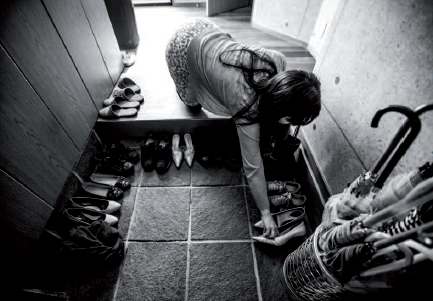



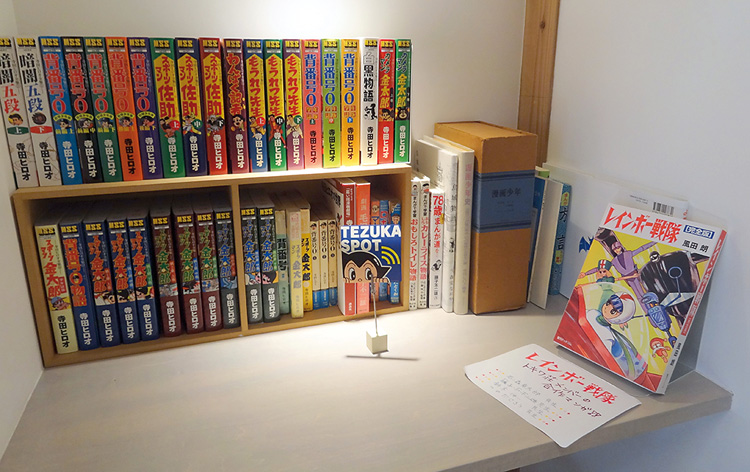
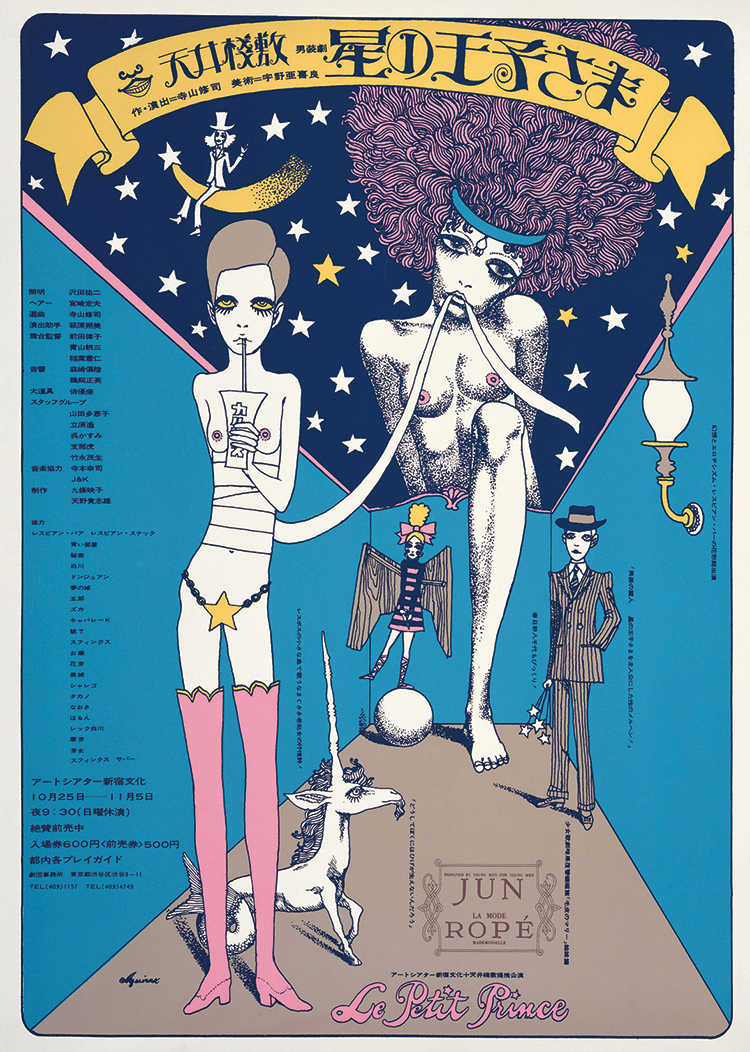
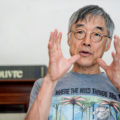
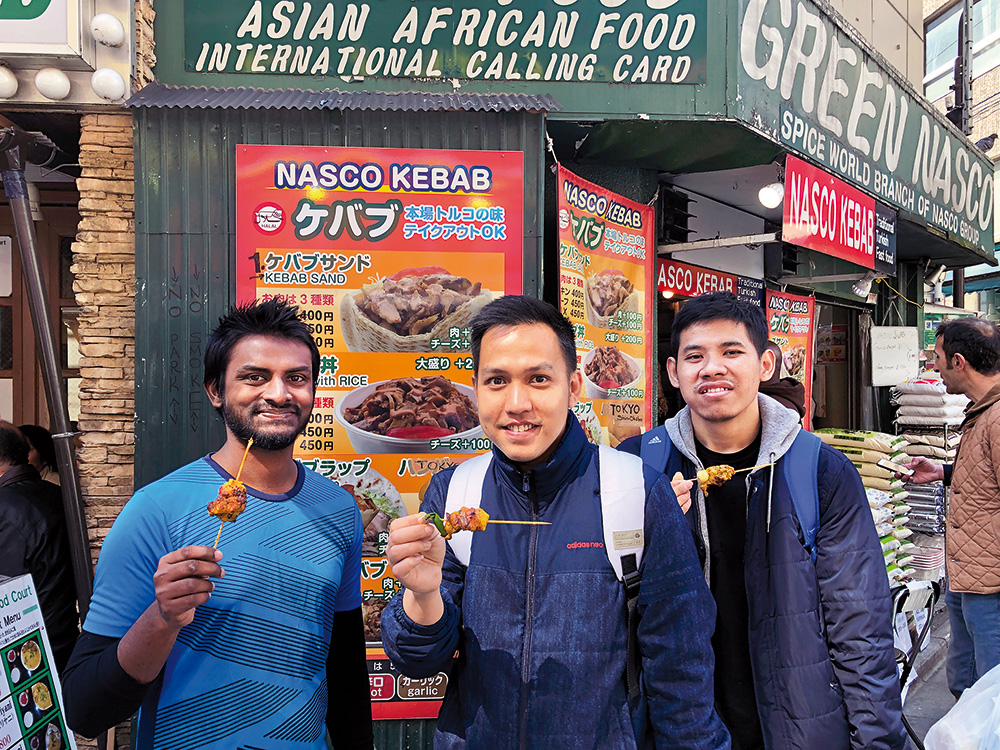


Leave a Reply